Épinal Tarot
The woodcuts were produced by Francois Georgin (1801-1863), a famous engraver during the Napoleonic period, retaining the composition and general features of the Tarot de Marseille.
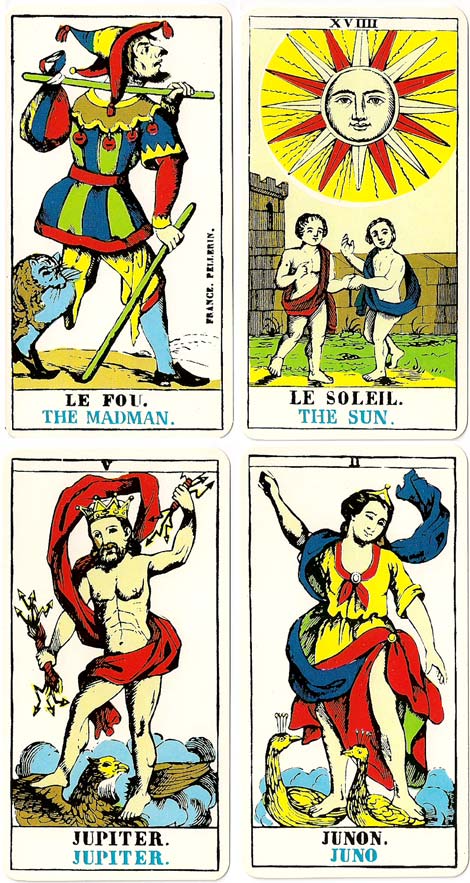
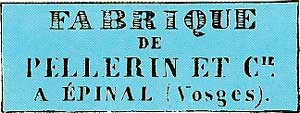
The Épinal tarot cards are believed to have been first published in 1830 by the art printers Pellerin & Cie, who were established in the Vosges district of France since 1796 producing card games, religious prints and other imagery, all inexpensively printed for popular distribution. The cards were in production until the 1870s. They have been reproduced more recently in several re-prints, including the edition shown here.
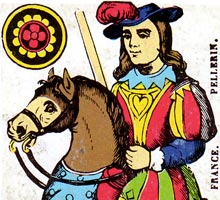
The woodcuts were produced by Francois Georgin (1801-1863), a famous engraver during the Napoleonic period, retaining the composition and general features of the Tarot de Marseille. As Épinal is located close to Besançon and Strasbourg, Georgin appears to have been inspired by packs in the “Tarot de Besançon” style which were already being produced locally and which include Juno and Jupiter on trumps nos II and V, instead of The Popess and The Pope, and who in the Roman pantheon were the emperor and empress of the gods. This feature originated during the earlier religious wars between Catholics and Protestants.
The colours are bright and cheerful. Some of the card titles and iconography depart from the traditional ones, such as ‘Escamoteur’ instead of ‘The Magician’ and ‘Le Capucin’ instead of ‘The Hermit’. The ‘Justice’ card shows a mirror and snake next to a book and ‘Laws’ engraved in stone.
The minor arcana numeral cards are attractively designed with elegant sword hilts, graceful handles on the batons, decorated with foiliage and flowers.

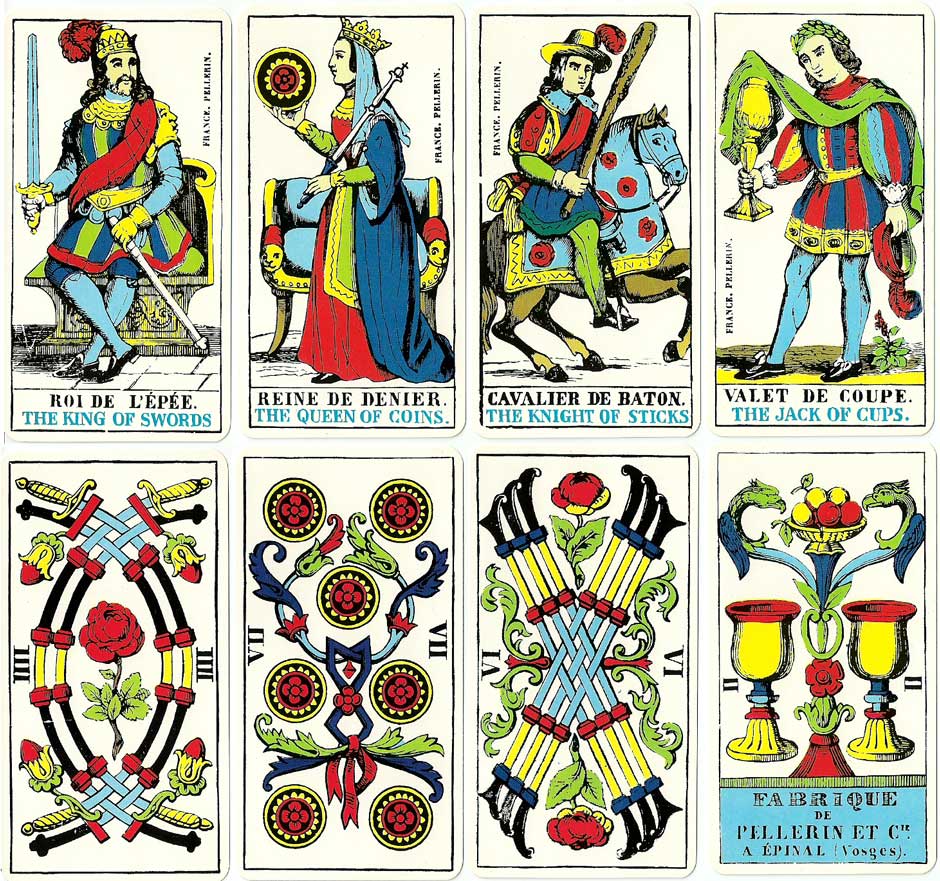
Above: “The Épinal Tarot”, 1830. Cards from the facsimile edition published by J .M. Simon, 1979. 78 cards plus a Consultant card, an information card and an explanation booklet written in English and French. According to the information card the woodcuts of this present edition are the same as those used by Francois Georgin (1801-1863), a famous engraver during the Napoleonic period.
Adam West-Watson wrote: "I have a very nice edition of it without the added English titles, published by Editions Arts et Lettres, 123 Grande-Rue, 54000 Nancy, from 1976. It does however credit J M Simon and Grimaud. The cards are identical except are just a tad shorter, have square corners and a very much more elegant back design."
See also: Cartes Questions-Devinettes
By Rod Starling (1936-2023)
United States • Member since January 09, 2013
Rod Starling was one of the founding members of the 52 Plus Joker card collectors club. He authored many articles for the club's quarterly newsletter, Clear the Decks. His collection encompasses both foreign and American decks. Rod also authored a book titled The Art and Pleasures of Playing Cards.

Leave a Reply
Your Name
Just nowRelated Articles
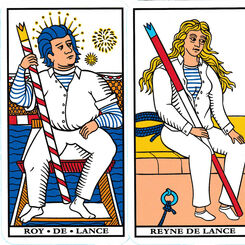
Le Tarot de Sète
Reinterpretation of the Tarot de Marseille by Julien Labat, an artist from Sète.
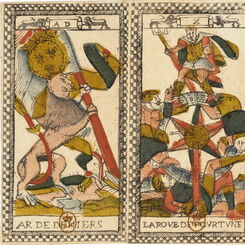
The Parisian Tarot
The “Parisian Tarot”, early 1600s, with imagery and design synthesizing several influences.
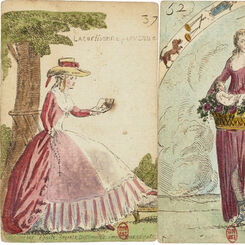
Jeu de Cartomancie pour l’amusement des Dames
Early French Cartomancy deck "for the amusement of Ladies" but also referred to as "Jeu divinatoire ...
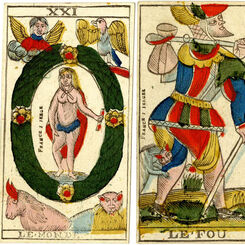
Besançon Tarot by Jacob Jerger
Besançon tarot published by Jacob Jerger, 18th century.

Jean Noblet Tarot de Marseille
Jean Noblet: the oldest known ‘Tarot de Marseille’ deck, Paris, c.1650.

Lilian Cailleaud’s Tarot Project
Lilian Caillaeud lino-cuts his version of the tarot by Nicolas Rolichon of Lyon c.1600

Héron French tarot
French edition of the ‘Bourgeois’ Tarot by Héron.

Tarot des Sapeurs-Pompiers de Paris
Tarot des Sapeurs-Pompiers de Paris, a French Fire Brigade tarot deck published by Éditions Dusserre...
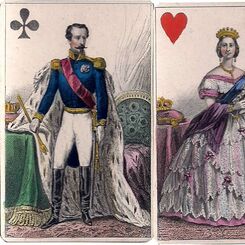
Cartes Imperiales et Royales
‘Cartes Imperiales et Royales’ published by B. P. Grimaud & Cie representing imperial rulers and con...
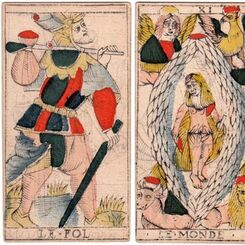
Charles Cheminade Tarot
Marseille Tarot cards by Charles Cheminade of Grenoble, France, early 18th century.

Linocut Printed Tarot Cards
Linocut is a printing technique similar to woodblock printing where a design is cut into linoleum (a...
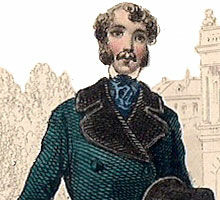
French Costumes
During the early 19th century. O. Gibert of Paris produced a series of such fashion packs, or packs ...
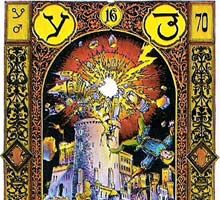
Stairs of Gold Tarot
Whilst the titles of the cards are in Italian, the Hebrew and Sanskrit letters on the Trump cards de...
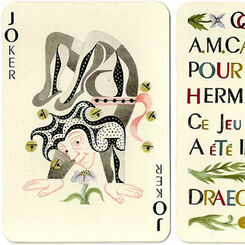
Cassandre for Hermès
Promotional playing cards created by A. M. Cassandre (pseudonym of Adolphe Jean-Marie Mouron, 1901-1...

Jeu Louis XV
B.P. Grimaud of Paris issued this very ornate costume deck called “Jeu Louis XV No.1502” in c.1895. ...
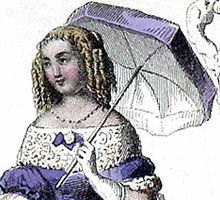
Jeu des Rois de France
This beautifully engraved and pleasing deck designed in 1856 has French Kings and consorts as the Ki...
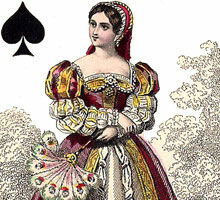
Jeu de Costumes Historiques
These cards are from neatly etched plates, and are carefully coloured. The court cards present full-...
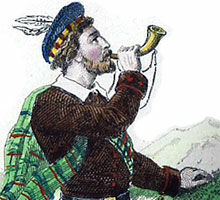
Jeu de Costumes Historiques Anglais
The courts are full-length figures of English historical personages.

French Costumes
The French taste for elegant, well engraved costume playing cards started during the early 19th cent...

Cartes Questions-Devinettes
A “Questions & Answers” family game from France produced by Imagerie Pellerin.
Most Popular
Our top articles from the past 60 days


 Your comment here. Your comment here. Your comment here. Your comment here. Your comment here. Your comment here. Your comment here. Your comment here. Your comment here. Your comment here. Your comment here. Your comment here. Your comment here. Your comment here. Your comment here. Your comment here. Your comment here. Your comment here. Your comment here. Your comment here. Your comment here. Your comment here. Your comment here. Your comment here. Your comment here. Your comment here. Your comment here. Your comment here. Your comment here. Your comment here. Your comment here. Your comment here.
Your comment here. Your comment here. Your comment here. Your comment here. Your comment here. Your comment here. Your comment here. Your comment here. Your comment here. Your comment here. Your comment here. Your comment here. Your comment here. Your comment here. Your comment here. Your comment here. Your comment here. Your comment here. Your comment here. Your comment here. Your comment here. Your comment here. Your comment here. Your comment here. Your comment here. Your comment here. Your comment here. Your comment here. Your comment here. Your comment here. Your comment here. Your comment here.




















